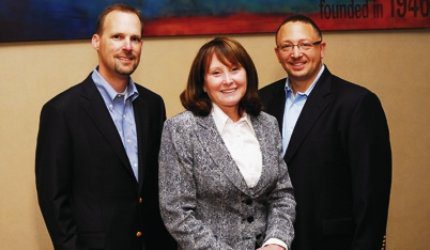At Lowe’s learning is all about results, and part of that is tied into the company’s performance support model.
“We look at everything from a system perspective. We look at the employee, the environment around the employee, the process and all of the tools that would enable an employee to be successful at whatever it is we need them to do,” said Cedric Coco, senior vice president of learning and organizational effectiveness at Lowe’s Companies Inc.
Metrics play a significant role in maintaining that results-driven focus. Human capital analytics related to learning as well as those associated with the business such as customer market, customer satisfaction data and indices around shrink — a retail term for lost product — all tie into learning and development efforts. This ensures programs are aligned with key business metrics and are having a strong impact on them.
“We don’t just look at ADDIE [instructional design model] and general skill development requirements from training classes,” he said. “We look at it from a productivity and performance perspective. If you want to talk about applied sales or about associates in various departments in the store, it’s getting together the key leaders that manage them — the people who actually selected the products based upon the customers’ demographic buying habits and needs – along with our learning people to determine a landscape of the market and what is asked of our employees.”
Finding out what’s necessary to meet market and customer demands may not require a learning intervention. Instead, Coco said he and his team start out trying to make an employee successful.
“We don’t start out saying, ‘We need to build a training program to make the employee successful,’” he explained. “When you take off the table up front the deliverable of the solution, the training program, you look at things from a more holistic perspective.”
Greg Nell, Lowe’s vice president of workforce readiness, said to facilitate that approach, the company’s systemic governance model is key. The model pulls critical, cross-functional executives to the table, and the learning team consults with them around performance, the current and desired state, what success looks like, how it should be measured, and how the organization will know when it has arrived.
“We conduct interviews, map out processes; we take this comprehensive view of the environment a workforce works in, and from that we do a needs analysis to call out the gaps,” Nell said. “It’s that partnership with cross-functional business executives that support our businesses that is really critical, and it has afforded us the credibility we have internally.”
Coco said a significant amount of Lowe’s investment into employee success actually does not focus on learning content and courses. One way the company’s stores train both customers and employees is through signage that identifies the top three to 10 characteristics customers use to make a product selection. Rather than spend thousands of hours training employees on the top three buying differentiators for the roughly 43,000 products in each store, or the 5,000-plus products in a given department, signage and labeling offer employees context clues to help a customer on the floor in real time.
In that example, learning leaders would partner with leaders responsible for signage, which goes back to the value of the Lowe’s governance model — each leader responsible for employees, or for a piece of the company employees need to be successful, participates to help make these types of connections.
Coco said a learning action item often arises as a by-product of the company’s business support plan, the strategy established to enable employees to serve customers.
“Training is an activity,” Nell said. “We’re much more focused on performance. How do you provide just-in-time relevancy for our workforce? Customers are shopping projects. In the past we’ve trained on products, by department. How do we enable associates to provide the best solutions to our customers around projects? It could be traditional e-learning, instructor-led training or job aids, but how do we support just-in-time [solutions], what I need to know when I need to know it? There’s a lot of focus on my team right now, and a lot of investment this year on leveraging innovative technologies to help support performance via handheld devices, social collaboration tools and rich simulations.”
“We’re very fortunate,” Coco said. “The CEO is extremely supportive of what we’re doing to prepare the workforce, and it starts with him. Personally, I’m fortunate that we’ve assembled a well-rounded business team to lead the strategy of learning for Lowe’s. That is what makes us successful.”
Kellye Whitney is managing editor of Chief Learning Officer magazine. She can be reached at kwhitney@clomedia.com.











